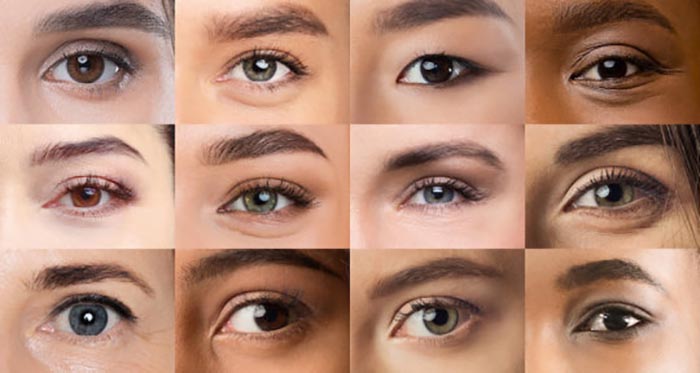The genetics of human eye color are much more complex than was thought until recently, according to a new study just published.
Eye color is primarily determined by the abundance of melanin in the iris pigment epithelium, which is greater in brown eyes than in blue eyes, and by the density and distribution of cells called stromal melanocytes, which are part of the connective tissue that supports the iris.
The relative proportions of the two forms of melanin, eumelanin and pheomelanin, within the iris, as well as light absorption and its scattering by extracellular components (Tyndall effect) are additional factors that give iris color.
The absolute amount of melanin and the eumelanin/pheomelanin ratio are highest in brown irises, whereas blue or green irises have very little of both pigments and relatively more pheomelanin.
European populations, or those with partial European origin, have the greatest diversity of iris colors, ranging from the lightest blue to the darkest brown.
The prevalence of blue eyes is correlated with geographic latitude across Europe and surrounding areas, likely as a result of human migration, and by natural and sexual selection.
Similarly, eye color variation with varying degrees of brown irises is observed in Asian populations, albeit with a much narrower range compared to brown eye color variation in Europeans.
Recently, an international team of genetic researchers led by King's College of London (England) and Erasmus University Medical Center, in Rotterdam (Netherlands), identified 50 new genes for eye color, in what is the largest genetic study of this type carried out to date.
The study, published in Science Advances, involved the genetic analysis of nearly 195 people in Europe and Asia.
The results now obtained will help improve the understanding of eye diseases such as pigmentary glaucoma and ocular albinism, situations in which eye pigment levels play a decisive role.
Furthermore, the researchers found that the eye color of Asians with different shades of brown is genetically similar to the eye color of Europeans, ranging from dark brown to light blue, which is surprising.
The research now published builds on earlier studies in which scientists had early on identified a dozen genes linked to eye color, assuming there were many more.
Prior to these investigations, scientists thought that eye color variation was controlled by one or two genes only, with brown eyes being dominant over blue ones.
Pyrrhus Hysi, of the King's College of London, one of the co-authors of the article, comments: “These findings are exciting because they increase our understanding of which genes cause one of the most striking features of human faces, and which have spawned many myths over countless generations of human history. . This will improve our understanding of many diseases that we now know are associated with specific pigmentation levels.”
Manfred Kayser of Erasmus University Medical Center of Rotterdam, and another co-author of the now-published article, adds: “This study provides the genetic knowledge needed to improve eye color prediction from DNA, as already applied in anthropological and forensic studies, but with limited accuracy for the non-blue eye colors. ”
In conclusion, the work now released has identified several new loci genetics associated with human eye color. You loci genetics that have now been identified explain the majority (53,2%) of the phenotypic variation in eye color in Europeans and a large proportion of the previously observed absent heritability of eye color.
The results of this investigation clearly demonstrate that eye color is a genetically very complex human trait, similar to hair and skin color.
The large number of new loci genetics associated with eye color, now identified, provides a valuable resource for future studies, aiming to understand the molecular mechanisms that explain the colorful smile of our gaze.
Author António Piedade is a Biochemist and Science Communicator. He published over 700 articles and chronicles of scientific dissemination in the Portuguese press and 20 articles in international scientific journals.
He is the author of nine books on science dissemination, among which “Iris Científica” (Mar da Palavra, 2005 – National Reading Plan) stand out, “Caminhos de Ciência” with a preface by Carlos Fiolhais (Imprensa Universidade de Coimbra, 2011) and “Diálogos com Ciência” (Ed. Trinta por um Linha, 2019 – National Reading Plan) prefaced by Carlos Fiolhais.
It regularly organizes cycles of scientific dissemination lectures, including the already very popular “Ciência à Seis”, at the Rómulo Centro Ciência Viva of the University of Coimbra.
He regularly gives lectures on scientific dissemination in schools and other institutions.





















Comments